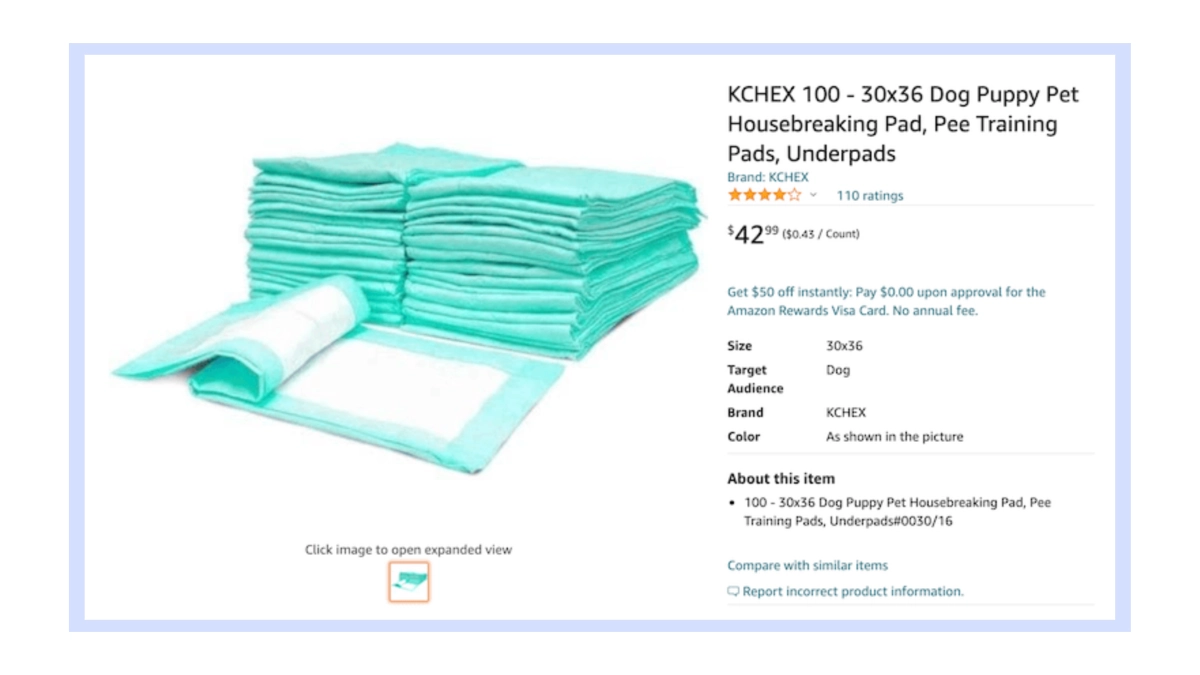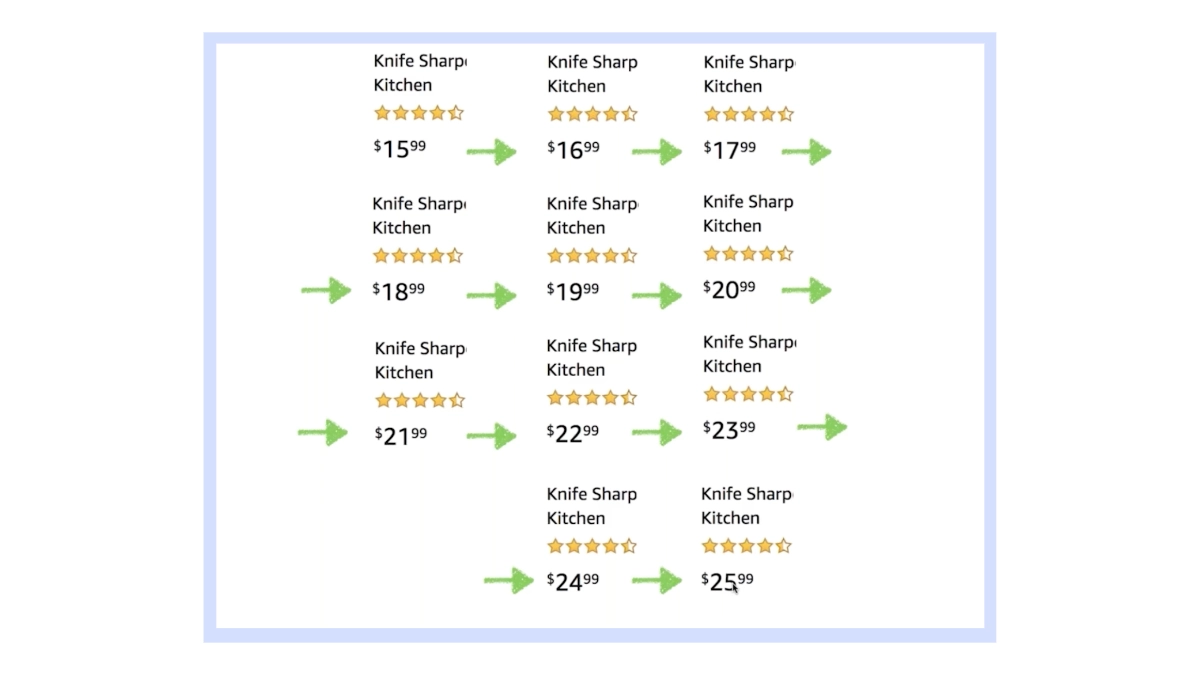We want attention in our lives. For our business, we want investors’ attention. For our products, we want customers’ attention. The same goes for our Amazon seller center. It wants our attention and insists on being treated as a top priority.
Running the Amazon business in a competitive marketplace where we are in a hurry to scale up the business by launching products continually for bigger earnings, it is too easy to disregard the must-given attention to Amazon seller central. It may cause havoc with just one product listing, several, or even the whole business.
That’s why I’m penning this post—to share with you, from my own personal experience, the essentials and the extras, the dos and don’ts at Amazon’s seller central.
Do’s in Amazon Seller Central
#1-Do Optimize your product listings
When a new product launches, sellers usually devote a lot of time and energy to optimizing the listings for maximum sales with special attention. For them, it’s crucial to have a well-crafted product title, an engaging product description, and a set of images (white background + Lifestyle). However, such concern for listings may go down the drain as the products are launched one after another.
I mean, seriously, why are you selling on Amazon?
For sure, to make sales.
But for that, you need to be at the top.
And you can’t get to the top if you can’t optimize your listings well.
But you won’t rise to the top until you improve your product listing with relevant keywords and excellent images.
Let’s take example
Look at this product listing.

It is poorly optimized. No proper keyword insertion in the product title; no description of the product. Just one product image is lying.
Look at another product listing.

It’s customized and efficient. The product title is well-optimized, and the description is both thorough and engaging with good keyword insertion.
If you compare the two listings above, you’ll notice that the second one ranks higher and would benefit more from a PPC Advertisement and Amazon SEO.
You can get a deep understanding of listing optimization from our previous blogs.
- How do you optimize your Amazon product listings for increased sales?
- Do’s and don’ts of optimizing your Amazon product listings – Helpful guide
- Why can trusting experts with your Amazon listings make all the difference?
- Top 7 tips for creating winning Amazon product titles with examples
If you want to see how the whole listing optimization thing works, you can try out our Amazon listing optimization service.
#2 – Do organize your Amazon advertising
Another important aspect of Amazon Seller Central is managing advertisements.

Most of the seller’s run PPC but can’t understand why it’s not generating results.
The reasons are obvious.
- They are not targeting the right keywords in their campaigns
- The product listings are not optimized
So, what do you do to organize and manage your Amazon advertising?
- Optimize product listings because all automatic PPC campaigns target keywords from listings and rank on the basis of them.
- Find the best keywords by doing keyword analysis on competitors.
- Measure KPIs – even after the success of PPC campaign. Analyze spends, ACOS, ROAS, CTR, impressions, etc.
- Assess what type of advertisement you have to do.
- The campaigns you create and the names you give each campaign should reflect how you perceive your business (Parent ASINs, Child ASINs, Product Lines, etc.)
In our previous posts, we discussed the topic in depth and provided several examples. If you want an in-depth breakdown, read them.
- 2023 in-depth Amazon advertisement guide for Amazon sellers
- 7 best marketing trends and predictions every seller should know
- Top sponsored product ad placement hacks for 2023
- Amazon sponsored brand ads; 5 must-see 2023 trends you can’t miss
- Amazon PPC automatic vs. manual campaigns; which one is right for your business?
- How and why should I hire an Amazon marketing agency?
#3- Do keep redefining your top goals

Assessing your goals is Step 3 in Amazon’s Seller Central management.
Do you seriously believe that goals will stay the same from product launch 1 to product launch 100?
Of course not.
When it comes to expanding their operations, most Amazon sellers fall short because they fail to adjust their focus in light of shifting market conditions, consumer preferences, and the demands of their target clients.
You can read the case study of our FBA clients who experienced the same situation.
That’s why your goals may need to change as your Amazon business grows. At first, perhaps your goals are to create a solid foundation, increase traffic, and boost visibility. However, as the business expands, you might decide to focus on other metrics, such as revenue growth, market penetration, customer retention, or product diversification.
#4- Do measure KPIs of Amazon ads regularly
It is impossible to gauge the efficacy of Amazon ads without first measuring key performance indicators (KPIs). Here are the actions needed to track the success of your Amazon advertising:

1-Develop Specific Advertising Goals
Your Amazon advertising campaign needs well-defined objectives before you can begin tracking key performance indicators. Some examples of these objectives include generating more revenue, raising awareness of your brand, attracting more buyers to your product listings, and strengthening relationships with existing customers.
2-Pick Useful Key Performance Indicators
After you’ve settled on certain objectives, it’s time to zero in on the measurements that will help you measure success. Your goals will determine the key performance indicators (KPIs) you use for your Amazon advertising campaign.
- Sales Metrics: Keep tabs on data like total sales, units sold, and revenue generated directly from your Amazon ads. Amazon provides comprehensive analyses that measure important indicators.
- Advertising Cost of Sales (ACoS): ACoS calculates how much of your advertising budget was successful in turning into sales. It is useful for assessing the performance of advertising campaigns and can be calculated using the formula ACoS = (Ad Spend / Sales) x 100.
- Click-Through Rate (CTR): CTR is the ratio of the number of people who saw your ad to the number of people who clicked on it. It’s a sign of how well the ad is doing its job. The CTR formula is simply clicks / impressions x 100.
- Conversion Rate (CR): CR represents the percentage of people who visited your product page and made a purchase. It demonstrates the effectiveness of your product listings and can be calculated as (Conversions / Clicks) x 100.
- Return on Advertising Spend (ROAS): ROAS measures the revenue generated from your ads compared to the amount spent on advertising. It can be calculated as ROAS = (Revenue / Ad Spend) x 100.
3-Access Amazon Advertising Analytics
Amazon provides detailed analytics tools for advertisers. You can access these tools through Amazon Seller Central or the Amazon Advertising Console. These platforms provide valuable data and reports that can help you track your KPIs.
4-Analyze Performance Data
Integrate Amazon’s advertising analytics data and reports into your daily reviews. Analyze your key performance indicators for patterns and insights. Examine the results of advertising, ad groups, or entire campaigns to figure out what worked and what may be improved.
5-Optimize Your Campaigns
Optimize your Amazon advertising initiatives with data-driven decisions based on your research. To increase performance and meet KPIs, you may need to modify your bids, targeted keywords, ad placements, or ad copy.
6- A/B Testing
Compare the efficacy of alternative ad formats, targeting strategies, or product images with a simple A/B test. You can learn a lot about what works and what doesn’t by experimenting with different approaches to your marketing.
Expertise and consideration must be taken when measuring Amazon KPIs. When in doubt, get advice from Amazon’s experts. You can check out the expertise of Amazon consultants at eComFist.
#5- Do rely on Amazon to help shoulder some of your load – Test, Test and Test.

Ask me whether I prefer doing things manually in Amazon Seller Central or implementing Amazon’s suggestions. If I had to choose, I’d say both.
My personal experience says that Amazon’s automatic bidding or advertisements produce less fruitful results. But I’ll prefer to run automatic bidding and campaigns at the start to find the relevant keywords and to determine a broad idea about keyword performance. However, later on, I’d move to manual bidding.
Similarly, if Amazon suggests ASINs or categories, take these as suggestions. However, these ideas may not always be successful and may result in fewer or no impressions at all. However, you may at least get a feel for what is successful and what is not in Amazon’s seller center.
Therefore, the formula is to test and then test again. Put your targeted choices and betas to the test. Give each method a shot. It might not work at first, but eventually it will become a highly effective solution.
Don’ts in Amazon Seller Central
#1- Don’t set a low ASP (Average Sales Price)
You’re selling on Amazon because…? to make a profit.
But what if you choose a low average selling price, which cuts into your profits?
If you decide at a later date that you want to raise the price to the ASP, you won’t have to do so all at once; instead, you can do so gradually, as shown below.

As a result, your business’s long-term viability and bottom line will suffer.
Moreover,
- It will cause consumers to view your brand as inferior and place it below premium options.
- Disrupting the competitive pricing point will cause you to lose your competitive edge.
- If your product is no longer differentiated from similar but less expensive options on the market, you risk losing your capacity to compete on price.
#2- Don’t expect instant success

It’s important to remember that building a successful Amazon business takes time, energy, and careful planning. Expecting to make sales after merely posting a product listing is unrealistic. Having a strong presence on Amazon requires familiarity with the marketplace, research into consumer preferences, and the application of proven marketing strategies.
So, be patient and wait; don’t hurry into Amazon Seller Central.
#3- Don’t run Amazon like your website
Selling on Amazon is very different from selling on different websites. Amazon’s standards are extremely high; therefore, any slack in order processing, customer service, or inventory counts may result in severe penalties.
#4- Don’t go against Amazon’s policies
The short-term gain cannot justify the permanent loss. And whatever you do, don’t debate Amazon on a matter of policy. It’s pointless! They are not going to make an exception for you. Instead, they will terminate your account and possibly even ban you entirely from the platform.
Learn the rules regarding the sale of restricted and gated items and what determines product compliance. In the end, it will ensure your safety.
#5- Don’t accept “no” as an answer

Knowing how to sell on Amazon successfully often comes down to how determined you are to resolve whatever problem is hindering your sales. The principle of “the squeaky wheel gets the grease” applies to Amazon’s Seller Support and Amazon Seller Central. If a matter has been closed without being resolved to your satisfaction, please don’t be reluctant to reopen it. As the number of calls to support continues to rise, it is more important than ever to take charge of the well-being of your account and listings.
To avoid making a bad situation more worse when no appropriate resources are available, it is recommended that you engage an Amazon account management service.
#6- Don’t act on impulse for listing and ad optimization
Amazon’s organic search ranking and ad placement algorithms are particularly delicate, and Amazon is noted for its tardy reporting. While it’s in everyone’s best interest to keep an eye on metrics in real time, it’s a huge mistake to fixate on faulty information and make complete adjustments to your Amazon listings or advertisements because of it. If you’re an Amazon seller, one of the most critical things you can do is evaluate at least 14 days of data, excluding the most recent 72 hours, before making any big strategic marketing decisions.
#7- Don’t coast but stay on your toes
If you’ve profited from recent sales growth, don’t expect it to continue forever. Over the past few years, online shopping has exploded, and Amazon has dominated the market. While we anticipate continued robust sales in 2020, many factors (including the election, COVID in the winter, Amazon’s shipping capacities, etc.) might cause swings in the market in 2021 and beyond. Don’t rest easy just because internet sales are up; that would be a mistake. Keep your attention on the basics.
Conclusion
After six years of using Amazon Seller Central, I’ve compiled the above list of dos and don’ts. It’s the real reason for my Amazon business’s success. In addition, I detailed the top products to sell on Amazon and 10 key lessons from my Amazon experience. It’s also based on things I’ve learned the hard way.
More reading means greater expertise and more money. And you keep on going that way.
If you ever have trouble growing your Amazon business, eComFist is here to lend a hand. Just give us a call or send us an email.








